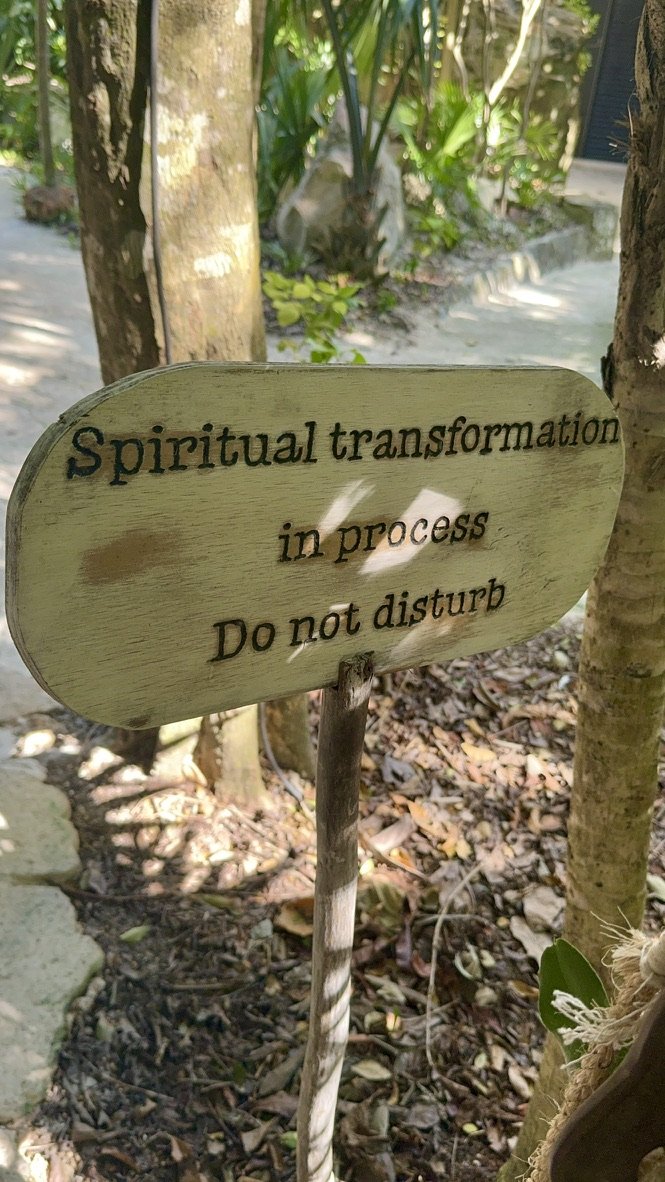Seasons of Change: Finding Resilience Through Yoga and Mindfulness
I can proudly say that when I hear the word change I no longer cringe or wince in fear and dread. But, let me tell ya, that didn’t happen overnight. I remember several instances throughout my life where I resisted change like it was my job. During a tough phase in my life my dad once told me, “Buddy, change is the only thing that you can count on” and boy was he right. That was a big shift for me and it still took me a couple of years to truly accept that statement and finally embrace change. Change is a constant in life, yet it can also be a major source of stress. Whether it’s a career shift, the end of a relationship, or entering a new life phase, change can leave us feeling pretty unsettled. It’s natural to want to keep things as they are; especially when things are seemingly “good”. But what happens when we start to welcome change and see it as an opportunity, that’s where healing happens. As a Mental Health therapist and yoga teacher, I’ve experienced first hand how integrating mental health strategies with yogic principles can help us face life’s transitions with greater ease and clarity.
Acknowledge Your Emotions
Embrace the Seasons of Life
Change We Choose vs. Change that Chooses Us
Cultivate Flexibility
Develop a Routine
Embrace Impermanence
Seek Support
1. Acknowledge Your Emotions
The first step in handling change is recognizing the emotions that come with it. Fear, sadness, frustration, and even excitement are natural responses to uncertainty. We often try to minimize these feelings to maintain control, but acknowledging them is essential for healing. It is easy to fall into the trap of telling a story about a feeling instead of just feeling it. Give yourself some grace and let yourself feel whatever comes up without judgement.
Practical Tools:
Mindful Journaling: Spend five minutes each day writing about your feelings. Use prompts like “What am I feeling right now?” or “What’s beneath this feeling?” to explore emotions with curiosity.
Breath Awareness: Practice a simple pranayama technique like Nadi Shodhana (alternate nostril breathing) to calm the mind and balance emotional energy.
Mindfulness, both in counseling and yoga, encourages us to observe our emotions without judgment. This practice allows us to stay present and process change in a healthier way. Breath-work (pranayama) in yoga helps us to manage overwhelming feelings, while anchoring us in the present moment.
2. Embrace the Changing Seasons of Life
Just as the seasons change, so do the phases of our lives. The transition from summer to autumn — with its shift from warm, long days to the crispness of fall — reminds us that change is inevitable and natural. Each season has its own beauty, much like the transitions we face in life.
Practical Tools:
Seasonal Rituals: Reflect the rhythm of nature in your life. For example, in autumn, write down things you want to release and burn the list as a symbolic act of letting go.
Guided Meditation: Try a visualization meditation where you imagine yourself as a tree, releasing leaves of old habits or attachments to make room for new growth.
Autumn teaches us the importance of letting go, as trees shed their leaves in preparation for new growth. In life, change provides opportunities to release habits or attachments that no longer serve us. Yoga’s principle of non-attachment (aparigraha) encourages us to flow with life rather than resist it. When we accept change as part of life’s cycle, we can find beauty even in difficult transitions.
3. The Change We Choose and the Change That Chooses Us
Not all change is within our control. Some changes, like starting a new job or moving, stem from our own decisions. Other changes — such as the loss of a loved one or an unexpected life event — are beyond our control. Understanding this distinction helps us navigate each type of change differently.
Practical Tools:
Empowerment Lists: When you choose change, create a “strength list” to remind yourself why you made the decision and what you’re capable of achieving.
Surrender Practice: For changes outside your control, practice a mantra such as “I release what I cannot control,” and pair it with a restorative yoga pose like Child’s Pose (Balasana).
Yoga teaches us that both types of change are part of life’s flow, encouraging us to embrace uncertainty and cultivate resilience.
4. Cultivate Flexibility — In Mind and Body
Change disrupts routines and expectations. In yoga, flexibility is both a physical and mental practice. Just as we adapt our bodies in postures, we must cultivate mental flexibility to handle life’s transitions.
Practical Tools:
Cognitive Reframing: Practice shifting your perspective. When a challenge arises, ask yourself, “What opportunity does this present?” or “What can I learn from this?”
Yoga Poses for Flexibility: Incorporate poses like Downward Dog (Adho Mukha Svanasana) or Pigeon Pose (Eka Pada Rajakapotasana) to physically release tension and symbolically embrace openness.
Cognitive flexibility helps us reframe our thoughts about change. Instead of viewing it as a disruption, we can see it as an opportunity for growth. In yoga, postures like the Tree Pose (Vrikshasana) remind us to stay grounded, even as life’s winds blow. Regular practice builds both mental and physical resilience, helping us embrace uncertainty with more ease.
5. Develop a Routine to Anchor You
One of the hardest parts of change is the loss of routine. Creating a new routine, even temporarily, can offer a sense of stability during transitions. Structure reduces anxiety by bringing predictability to uncertain times.
Practical Tools:
Morning Ritual: Start your day with a grounding practice, such as three rounds of Sun Salutations (Surya Namaskar), five minutes of breath-focused meditation or simply being mindful and present when you have your morning tea/coffee.
Gratitude Practice: Start or end your day by listing three things you’re grateful for, helping you shift focus from stress to positivity.
A simple yoga or mindfulness practice, even for a few minutes each day, can help maintain continuity. Starting your day with gentle stretching or breath-work offers control amidst external changes. Small habits like journaling or practicing gratitude can also provide a sense of calm during transitions.
6. Embrace Impermanence
Both mental health and yoga emphasize the importance of accepting impermanence. The yogic principle of non-attachment (aparigraha) teaches us to let go of what passes naturally. Similarly, accepting that nothing is permanent in life can ease our resistance to change.
Practical Tools:
Impermanence Meditation: Sit quietly and reflect on the temporary nature of your thoughts and feelings, observing how they rise and fall like waves.
Forward-Fold Sequence: Practice seated or standing forward folds, which encourage introspection and letting go.
Resisting change often creates more suffering, while embracing life’s temporary nature opens us to new possibilities. This doesn’t mean ignoring grief or hardship, but recognizing that they, too, will pass with time. A yoga practice focused on forward folds or heart-opening postures can embody this idea, allowing us to honor our emotions while making space for new experiences.
7. Seek Support When Needed
Navigating change doesn’t mean doing it alone. Seeking support — whether through therapy, yoga classes, or close relationships — is crucial. Counseling can help us process complex emotions, while yoga groups foster connection and shared understanding.
Practical Tools:
Connection Circles: Join a community yoga class or mindfulness group to share experiences and gain insights from others navigating change.
Therapeutic Support: Work with a counselor to explore deeper emotions and develop personalized strategies for resilience.
Navigating change is less about controlling the transition and more about how we respond to it. Like the changing seasons, each phase of life brings its own beauty and purpose. By integrating mental health practices with yoga’s wisdom, we can cultivate resilience and face life’s inevitable changes with grace and strength. Remember, change is not something to fear, but something to flow with — offering opportunities for growth, whether it’s a change we choose or one that chooses us.


